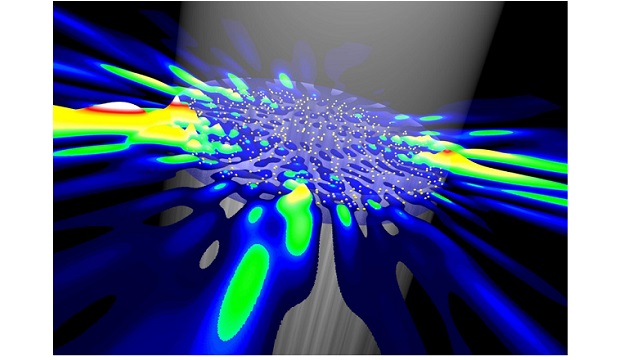A team of researchers from Tampere University of Technology in Finland, University Roma Tre in Italy, the University of Southampton in the U.K., and Case Western Reserve University in the U.S. has demonstrated a new design for random lasers, where an optically induced soliton waveguide improves the lasing characteristics and guides the laser output into a well-defined direction with good profile.
Such lasers exhibit transistor-like behavior as the soliton aids bringing the system into operation, and they emit light in a direction controllable by external voltage. To overcome the limitations of random lasers, the researchers combined nematic liquid-crystal, all-optical waveguiding with random lasing.
The liquid crystal, doped with dye molecules to provide gain, plays two different roles. By relying on the nonlinear response to a weak nonresonant continuous-wave laser beam, a light-induced soliton waveguide, known as a nematicon, is induced. The scattering properties provide sufficient feedback for random lasing when the dye molecules are pumped by a pulsed laser resonant with them.
The scientists demonstrated that a nematicon-assisted random laser exhibits typical characteristics, such as pump energy threshold for lasing and narrow spectral peaks emerging from a spontaneously emitted background. Moreover, the soliton waveguide collects the generated light and channels it to the output with a smooth spatial structure.
The research was funded by the Academy of Finland through the Finland Distinguished Professor Programme and by Tampere University of Technology.

